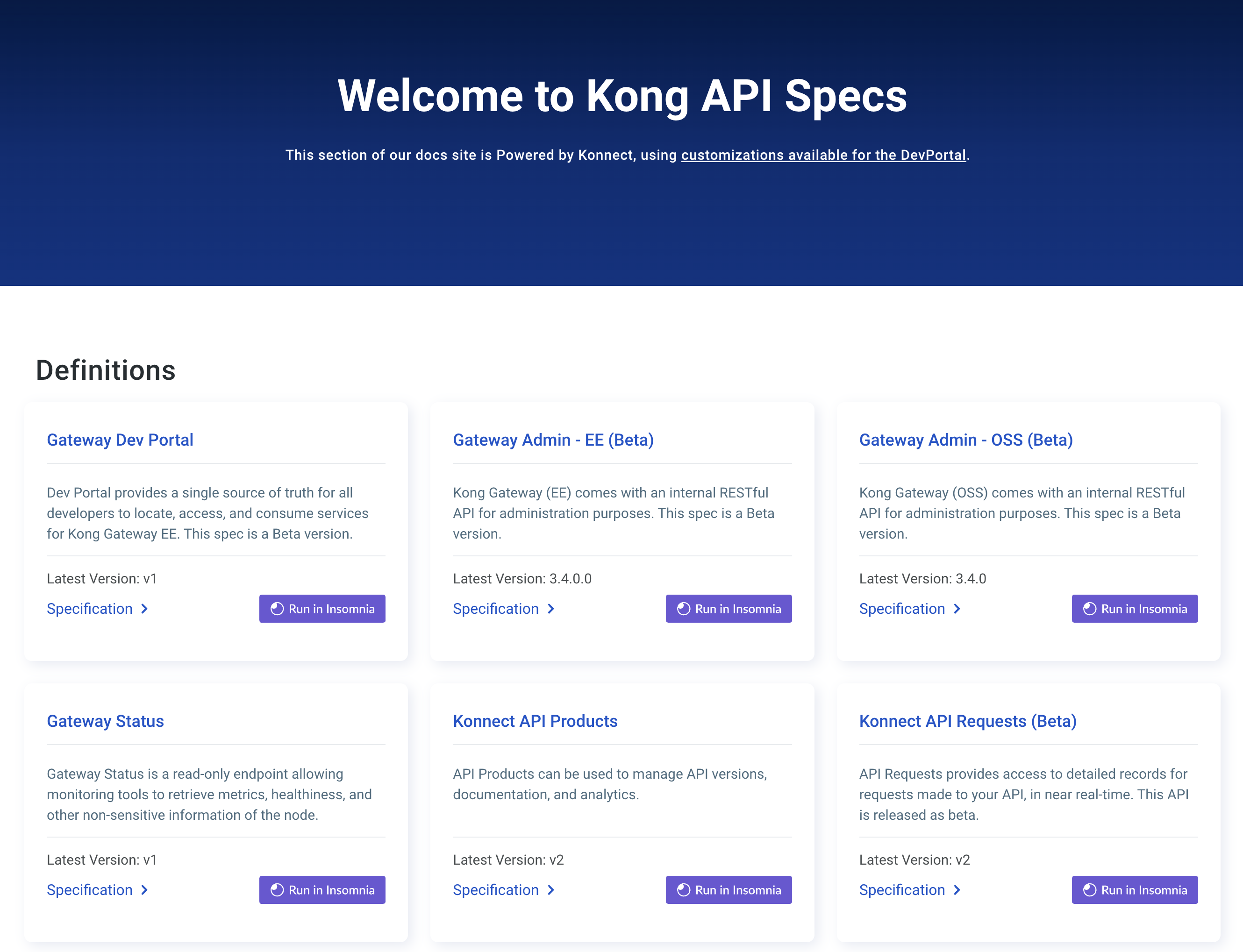このページは、まだ日本語ではご利用いただけません。翻訳中です。
旧バージョンのドキュメントを参照しています。 最新のドキュメントはこちらをご参照ください。
Rewriting hosts and paths
This guide demonstrates host and path rewrites using Ingress and Service configuration.
Prerequisites: Install Kong Ingress Controller with Gateway API support in your Kubernetes cluster and connect to Kong.
Prerequisites
Install the Gateway APIs
-
Install the Gateway API CRDs before installing Kong Ingress Controller.
kubectl apply -f https://github.com/kubernetes-sigs/gateway-api/releases/download/v1.0.0/standard-install.yaml -
Create a
GatewayandGatewayClassinstance to use.echo " --- apiVersion: gateway.networking.k8s.io/v1beta1 kind: GatewayClass metadata: name: kong annotations: konghq.com/gatewayclass-unmanaged: 'true' spec: controllerName: konghq.com/kic-gateway-controller --- apiVersion: gateway.networking.k8s.io/v1beta1 kind: Gateway metadata: name: kong spec: gatewayClassName: kong listeners: - name: proxy port: 80 protocol: HTTP allowedRoutes: namespaces: from: All " | kubectl apply -f -The results should look like this:
gatewayclass.gateway.networking.k8s.io/kong created gateway.gateway.networking.k8s.io/kong created
Install Kong
You can install Kong in your Kubernetes cluster using Helm.
-
Add the Kong Helm charts:
helm repo add kong https://charts.konghq.com helm repo update -
Install Kong Ingress Controller and Kong Gateway with Helm:
helm install kong kong/ingress -n kong --create-namespace
Test connectivity to Kong
Kubernetes exposes the proxy through a Kubernetes service. Run the following commands to store the load balancer IP address in a variable named PROXY_IP:
-
Populate
$PROXY_IPfor future commands:export PROXY_IP=$(kubectl get svc --namespace kong kong-gateway-proxy -o jsonpath='{.status.loadBalancer.ingress[0].ip}') echo $PROXY_IP -
Ensure that you can call the proxy IP:
curl -i $PROXY_IPThe results should look like this:
HTTP/1.1 404 Not Found Content-Type: application/json; charset=utf-8 Connection: keep-alive Content-Length: 48 X-Kong-Response-Latency: 0 Server: kong/3.0.0 {"message":"no Route matched with those values"}
Deploy an echo service
To proxy requests, you need an upstream application to send a request to. Deploying this echo server provides a simple application that returns information about the Pod it’s running in:
kubectl apply -f https://docs.jp.konghq.com/assets/kubernetes-ingress-controller/examples/echo-service.yaml
The results should look like this:
service/echo created
deployment.apps/echo created
Add routing configuration
Create routing configuration to proxy /echo requests to the echo server:
The results should look like this:
Test the routing rule:
curl -i -H 'Host:kong.example' $PROXY_IP/echo
The results should look like this:
HTTP/1.1 200 OK
Content-Type: text/plain; charset=utf-8
Content-Length: 140
Connection: keep-alive
Date: Fri, 21 Apr 2023 12:24:55 GMT
X-Kong-Upstream-Latency: 0
X-Kong-Proxy-Latency: 1
Via: kong/3.2.2
Welcome, you are connected to node docker-desktop.
Running on Pod echo-7f87468b8c-tzzv6.
In namespace default.
With IP address 10.1.0.237.
...
If everything is deployed correctly, you should see the above response. This verifies that Kong Gateway can correctly route traffic to an application running inside Kubernetes.
Rewriting the host
Kong Ingress Controller provides two annotations for manipulating the Host header. These annotations allow for three different behaviours:
- Preserve the user-provided
Hostheader - Default to the
Hostof the upstream service - Explicitly set the
Hostheader to a known value
Preserve the Host header
Kong Ingress Controller preserves the hostname in the request by default.
$ curl -H 'Host:kong.example' "$PROXY_IP/echo?details=true"
HTTP request details
---------------------
Protocol: HTTP/1.1
Host: kong.example
Method: GET
URL: /?details=true
The Host header in the response matches the Host header in the request.
Use the upstream Host name
You can disable preserve-host if you want the Host header to contain the upstream hostname of your service.
Add the konghq.com/preserve-host annotation to your route:
The Host header in the response now contains the upstream Host and Port.
HTTP request details
---------------------
Protocol: HTTP/1.1
Host: 192.168.194.11:1027
Method: GET
URL: /?details=true
Set the Host header explicitly
You can set the Host header explicitly if needed by disabling konghq.com/preserve-host and setting the konghq.com/host-header annotation.
-
Add the
konghq.com/preserve-hostannotation to your Ingress, to disablepreserve-hostand send the hostname provided in thehost-headerannotation: - Add the
konghq.com/host-headerannotation to your Service, which sets theHostheader directly:$ kubectl patch service echo -p '{"metadata":{"annotations":{"konghq.com/host-header":"internal.myapp.example.com"}}}' -
Make a
curlrequest with aHostheader:curl -H 'Host:kong.example' "$PROXY_IP/echo?details=true"The request upstream now uses the header from the
host-headerannotation:HTTP request details --------------------- Protocol: HTTP/1.1 Host: internal.myapp.example.com:1027 Method: GET URL: /?details=true
Rewriting the path
There are three options to rewrite the default path handling behavior:
- Rewrite using regular expressions
- Remove the path prefix using
strip-path - Add a path prefix using the
pathannotation
Rewrite using regular expressions
This feature is available from Kong Ingress Controller 2.12 and requires the
RewriteURIsfeature gate to be activated.
Add the konghq.com/rewrite annotation to your Ingress, allows you set a specific path for the upstream request. Any regex matches defined in your route definition are usable (see the annotation documentation for more information):
The request upstream now contains the value of the rewrite annotation:
HTTP request details
---------------------
Protocol: HTTP/1.1
Host: kong.example
Method: GET
URL: /hello/world?details=true
Strip the path
This is the default behavior of Kong Ingress Controller. Set
konghq.com/strip-path="false"to disable this behavior
Add the konghq.com/strip-path annotation to your Ingress, which strips
the path component of the route/Ingress, leaving the remainder of the path at
the root:
The request upstream now only contains the path components not in the Ingress rule:
HTTP request details
---------------------
Protocol: HTTP/1.1
Host: kong.example
Method: GET
URL: /?details=true
Prepend a path
Add the konghq.com/path annotation to your Service, which prepends
that value to the upstream path:
$ kubectl patch service echo -p '{"metadata":{"annotations":{"konghq.com/path":"/api"}}}'
The request upstream now contains a leading /api:
HTTP request details
---------------------
Protocol: HTTP/1.1
Host: kong.example
Method: GET
URL: /api?details=true
strip-path and path can be combined together, with the path component
coming first. Adding both annotations send requests for /api/echo.












